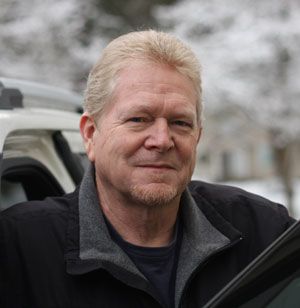Thoughtful drivers speak up
Lately, many thoughtful drivers have emailed their insights and inquiries about driving situations and behaviors.
For example, N.M. asked, “What are the rules for using turn signals when approaching a roundabout? No one uses them so you never know the ultimate direction a car will go.”
There is no signal requirement when approaching a roundabout, since each driver then has only one entrance choice. Within a roundabout, drivers can legally go right (1/4), head straight (1/2), go left (3/4), or U-turn (4/4), all basically right turns from the circle.
The proper approach method is yielding to vehicles already in the roundabout, but not stopping when traffic and pedestrians are absent. A signal is advisable for changing lanes in large, multi-lane roundabouts, but there is generally neither time nor requirement for using them when exiting local roundabouts. Exiting slowly and safely is required, however, along with recommendations shown at the WSDOT website.
And L.S. wrote, “Please comment on U-turns such as the one that caused a serious accident on Hwy 395 at Deer Park the other day. I’ve observed a big increase in U-turns on residential streets, such as right in front of my house, the last couple of years. So, I’m wondering what, if anything, is legal when it comes to U-turns.”
U-turns fall in a somewhat gray area in Washington law. They are essentially allowed where not prohibited by signage when it is not otherwise unsafe due to traffic, terrain or visibility. That leaves much to the subjective judgment of drivers, law enforcement and courts, along with resultant ill-advised, unsafe U-turns. City law trumps state law, and U-turns within certain “congested areas” in many cities (like Spokane) are forbidden. Otherwise, unless a U-turn crosses a painted median or solid white line, it is permitted when deemed “safe” based on surrounding line of sight and traffic.
B.L. warned, “Now I have a request that involves the reality of very frequent collisions with deer, elk, and moose. As an aside: On my way to Bellingham by auto, I noticed signs near Rye Grass Summit indicating about 50 collisions with elk — didn’t provide a time span. The profile of my Honda Accord is such that hitting big game can result in the animal impacting the windshield and???”
Wildlife is a valid concern for drivers. I believe I am vigilant, but often the deer, elk or moose hit us moreover than we hit them. When a collision is imminent, I understand that staying off the brakes lessens the odds of “scooping” the animal into the windshield due to vehicle nose dive.
B.B. commented, “Your latest column mentioned braking on ice “gently,” but using a hard pedal to let ABS activate was not discussed.”
I’ve discussed ABS (antilock braking system) operation in the past, but B.B. is right that I left it out of a recent column. I still think it’s best to achieve a controlled, gentle stop when possible with enough of an advanced slowdown to avoid ABS activation. Although, when that does not happen, a hard pedal with a hope to steer around obstacles during an ABS-activated stop is the best “crisis” option. Both soft-pedal controlled stops and hard-pedal ABS-activated stops are viable methods, especially in slick conditions. Old-school brake “pumping” is ill-advised with ABS brakes, however, since it “fools” the ABS system and inhibits its effectiveness.
Thinking about the driving process surely enhances safety while engaging in it.
Readers may contact Bill Love via email at precisiondriving@spokesman.com.
